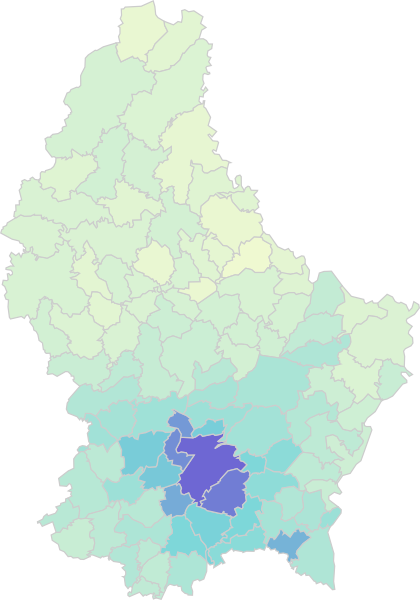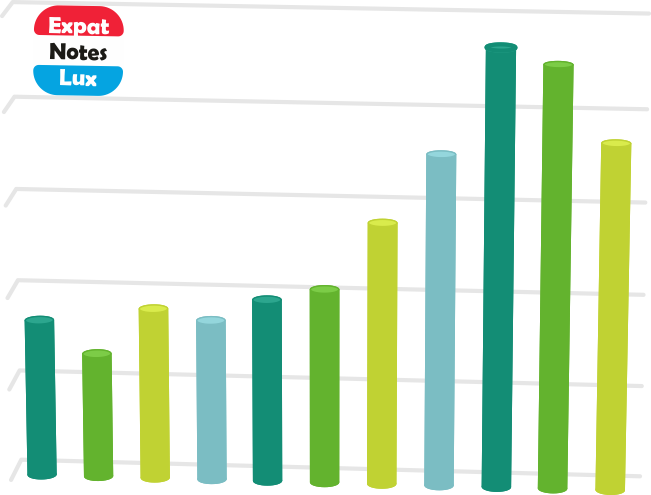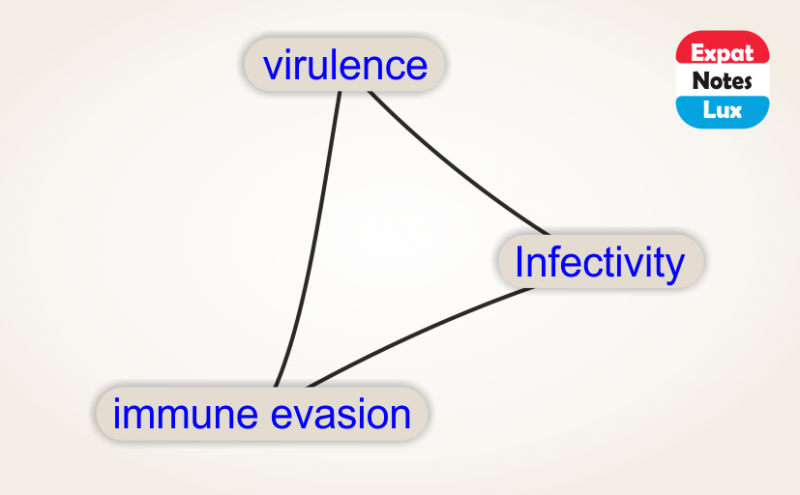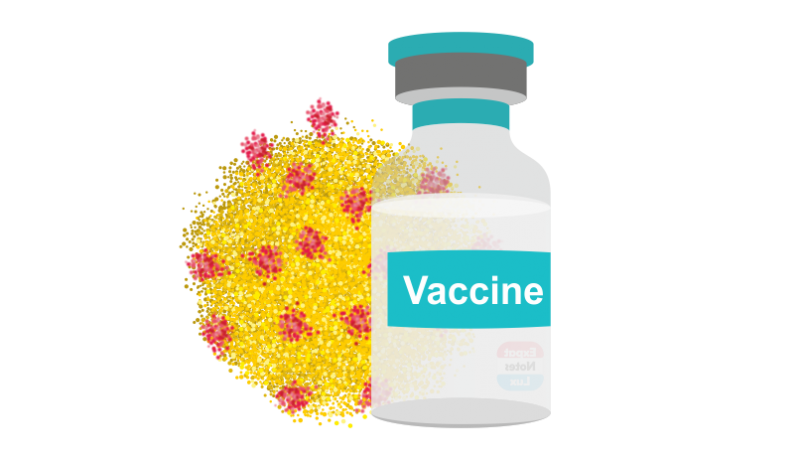This is a OPINION PIECE and should be interpreted with CAUTION!
The text is ‘overtly simplified’ for general audience and DOES NOT CLAIM scientific accuracy but is only intended to present easy to understand information.
The Luxembourg Mnistry of Health through its ‘contact tracing teams’ found on average over 25% of weekly new-infections detected are transmitted within the household, which seems very likely as the ‘associations/ contact’ within a household are strong (spend longer times together) and highly connected (meaning all members share the same space). A similar scenario can be imagined in an old-age care home or nursing homes where the residents share immediate contact with other residents and share the same space (within the infrastructure). So, in principle, a ‘single’ infected person (red dots) has a higher likelihood to ‘transmit’ to other members (blue dots) within these spaces and hence record a higher transmission rate.
The next place of contaminations were found to be ‘closed shared spaces’ like schools, offices, restaurants, etc. where people have strong (spend longer times together) and connected (meaning all members share the same space) ‘associations/ contact’ within a smaller group. Meaning while within a school environment, one infected student has a higher likelihood to infect his/her classmates, whereas the chances for infection to spread to all students would be a ‘rare’ event.
Finally, the ‘publicly shared spaces’ like parks, public transport, supermarkets, gyms, etc. probably record the the lowest infection rates because the ‘associations/ contacts’ are weaker (spend short time together) and sparsely connected (meaning all the members do not share the same space regularly).
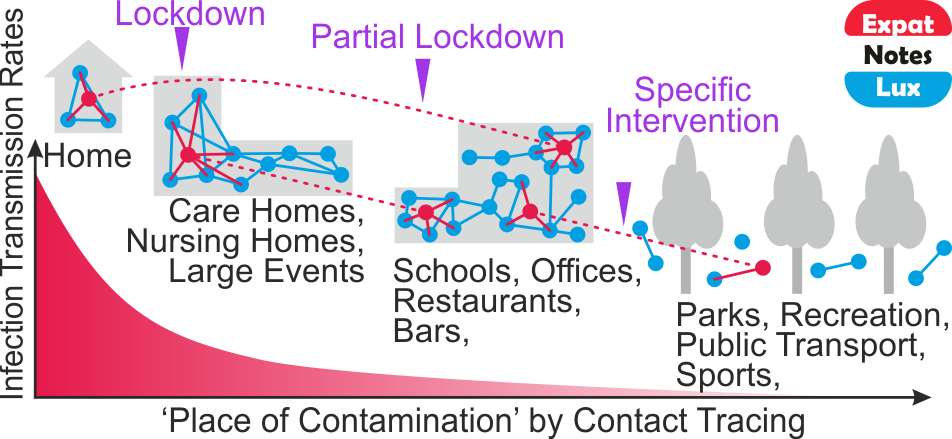
This would bring us to the part where interventions/ measures (like lockdowns, curfews or specific restrictions) are intended to ‘break the transmission chain‘ (the dotted red lines) and hence to slowdown the infection rate.
It might be understandable that the ‘measures’ to limit participation in sports, gyms, buses, etc are probably less effective to ‘break the transmission chains’ compared to ‘measures’ intended for schools, offices, restaurants, bars, cinema-halls, etc. The next level ‘partial lockdowns’ or ‘curfews’ are intended to be more concentrated effort to trim-down the infection rates but it would not ‘turn a quick result’ if the overall occupants are not decreased simultaneously (meaning office-going people start teleworking, less students attend classes, restaurants can be occupied by less customers, etc), and in effect make these common-spaces less crowded!
OPINION: IF the current infection rates are deemed not sustainable in long run (600-800 new infections per day) and do not decrease by its own (public behavioural changes and increased participation in the current measures), stricter measures may be unavoidable in near future before a complete lockdown.
first published : 06.11.2020
